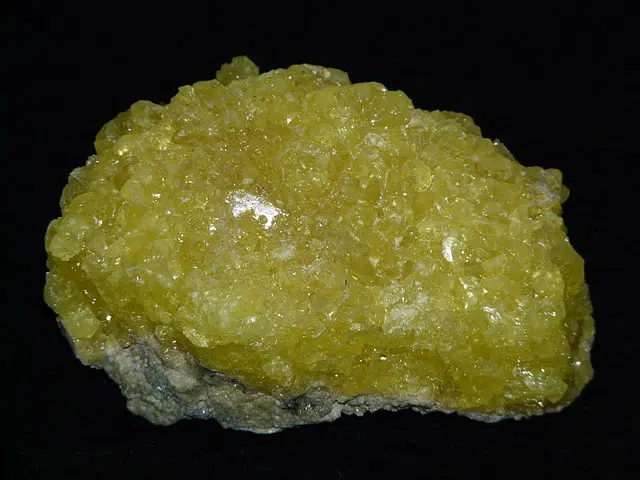
A strong odor and yellowish color characterize sulfur
Sulfur is the chemical element whose symbol is S and its atomic number is 16 . The term comes from the Latin word sulfur .
General characteristics
Widespread in the crust of our planet , sulfur is characterized by its penetrating odor and yellowish color. It is found in its native state or in the form of sulfate or sulfur , and is used in the pharmaceutical industry and other sectors.
Sulfur is classified as a non-metal since it does not have a good capacity for conduction of heat or electricity . It is also included among the essential chemical elements because it is essential for life.
As one of the constituents of methionine and cysteine , sulfur is essential for protein synthesis . On an industrial level, this substance is used to produce insecticides , manufacture gunpowder or as fertilizer , for example.
It is important to mention that various compounds that include sulfur can be dangerous to health . Sulfur dioxide , hydrogen sulfide and carbon sulfide , among others, have a high level of toxicity and can cause anything from mucus irritation to bleeding and asphyxiation.
Sulfur stick
In some regions, meanwhile, sulfur sticks are used to relieve neck or back pain. It is believed that by rubbing the bar on the affected area, it helps eliminate the air that causes the discomfort: once the air is removed, the sulfur bar breaks. It must be clarified, however, that there is no scientific evidence on the effectiveness of this treatment .
Those who have tried it and believe in its effectiveness say that before the treatment they have great difficulty turning their heads, something that is similar to the symptoms of torticollis , which contracts the neck muscles and causes intense pain, but milder. After passing the sulfur bars over the affected area, its advocates claim that the discomfort is considerably reduced, or even disappears completely, and neck mobility is recovered.
sulfur dioxide
Sulfur dioxide is known as a colorless gas of great toxicity that, if concentrated, can generate an intense odor and discomfort in the eyes, such as irritation and decreased visibility. In the Earth's atmosphere, where it is estimated to last a few days, it combines with water easily throughout its oxidation and this results in the emergence of sulfuric acid and acid rain .
It is generally generated in the combustion of fuels that contain a certain amount of sulfur (such as diesel and coal). This usually occurs as a result of some industrial processes, coal heating, the operation of heavy vehicles and the activity of thermal power plants. But sulfur dioxide can also originate in the eruptions of volcanoes or as a result of organic decomposition.

Volcanic eruptions also produce sulfur dioxide
Sulfur dioxide risks
The damage that exposure to this gas can cause affects humans but also the soil, forests, seas and the rest of the living beings in different ecosystems. In our particular case, it infiltrates the body through the nasal passages , although it also causes problems in the digestive system and eyes.
Some of the most common symptoms of sulfur dioxide exposure are the following:
* respiratory problems. The rhythm is altered and becomes more difficult;
* cough;
* migraine;
* strong itching in the throat and nasal passages;
* irreversible damage to some parts of the lung.
